Dive beneath the surface of North America’s freshwater ecosystems to discover a hidden world of fascinating aquatic insects that have captivated naturalists for generations. From darting water striders to mysterious dragonfly nymphs, these remarkable creatures form the backbone of our underwater wonders of Ontario and beyond. These six-legged swimmers, skaters, and crawlers not only serve as essential indicators of water quality but also provide crucial links in the aquatic food chain, supporting everything from fish to waterfowl.
Whether you’re a curious family exploring a local pond, an educator seeking to inspire young minds, or a naturalist expanding your knowledge, aquatic insects offer endless opportunities for discovery and learning. Their incredible adaptations – from the bubble-carrying abilities of water beetles to the silk-spinning talents of caddisfly larvae – showcase nature’s engineering at its finest. Join us as we explore these remarkable creatures that have mastered life in North America’s waters, from the smallest creek to the mightiest river systems.
Where to Find Aquatic Insects in Ontario Parks
Best Observation Spots
Ontario offers several prime locations for observing aquatic insects in their natural insect habitats. Algonquin Provincial Park’s numerous shallow ponds and streams along the Spruce Bog Boardwalk provide excellent viewing opportunities, especially during early morning hours. The calm waters of Lake of Two Rivers offer perfect conditions for spotting water striders and diving beetles.
In southern Ontario, the Presqu’ile Provincial Park marshlands are a haven for dragonflies and damselflies, particularly along the Owen Point Trail. The shallow waters here make it easy for families to observe these fascinating creatures up close.
For those near Toronto, Tommy Thompson Park’s constructed wetlands host an incredible variety of aquatic insects. Visit during spring and summer months when activity peaks, and don’t forget to check out the viewing platforms along the main trail.
The Credit River in Mississauga, especially near Erindale Park, offers fantastic opportunities to spot mayflies and stoneflies. Pro tip: bring a white sheet and flashlight during evening hours – many aquatic insects are attracted to light!
Seasonal Activity Patterns
Ontario’s aquatic insects follow distinct seasonal patterns, making each time of year unique for observation. Spring brings mayflies and stoneflies as water temperatures rise, while summer showcases the greatest diversity with dragonflies, damselflies, and water striders in abundance. Don’t miss the fascinating nocturnal aquatic activity during warm summer evenings, when many species become particularly active.
Fall witnesses the emergence of certain caddisfly species, and you might spot diving beetles preparing for winter. Even in winter, some hardy species remain active beneath the ice, though they’re harder to observe. Pro tip: early morning and dusk are generally the best times for viewing across all seasons, as many insects are most active during these transition periods.
Keep a nature journal to track when different species appear in your local water bodies. This not only enhances your observation skills but also helps you plan future visits during peak activity periods. Remember that weather patterns and water temperatures can shift these timing windows by a few weeks each year.
Common Aquatic Insects You’ll Spot
Water Striders and Pond Skaters
Have you ever seen insects that seem to magically walk on water? Those are likely water striders or pond skaters, fascinating creatures that make the surface of Ontario’s ponds and quiet streams their home. These remarkable insects use surface tension and specialized leg adaptations to glide effortlessly across the water, looking almost like tiny ice skaters on a frozen pond.
You’ll spot these agile insects zipping around in groups, especially on calm days when the water surface is mirror-smooth. Their long, slender legs spread their weight so effectively that they create small dimples in the water without breaking through. What’s even more impressive is how they use ripples on the water’s surface to detect both prey and potential mates!
Here’s a fun tip: If you want to observe water striders up close, find a quiet spot near the edge of a pond and stay still for a few minutes. They’ll eventually return to their normal activities, hunting small insects that fall onto the water’s surface. Just remember to avoid disturbing the water or casting shadows that might frighten them away.
These helpful predators play an important role in controlling mosquito populations, making them valuable members of our aquatic ecosystems.
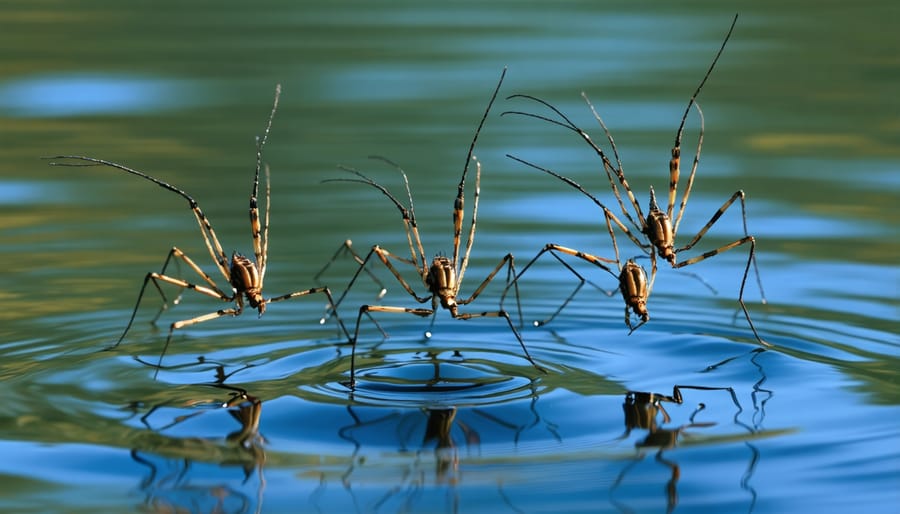
Dragonfly and Damselfly Nymphs
Among the most fascinating predators in Ontario’s freshwater ecosystems, dragonfly and damselfly nymphs are remarkable underwater hunters. These larvae spend months, sometimes years, beneath the surface before emerging as the graceful aerial acrobats we know and love.
Unlike their winged adult forms, these nymphs are stocky and somewhat alien-looking, with large eyes and extendable lower jaws called labiums that shoot out like lightning to snatch their prey. Think of them as nature’s underwater ninjas! Dragonfly nymphs are typically larger and more robust, while damselfly nymphs are slender with three feather-like gills at their tail end.
You’ll often find these fierce predators lurking among aquatic plants or hiding in the sediment, waiting to ambush smaller insects, tadpoles, and even tiny fish. They’re excellent indicators of water quality since they need clean, healthy water to thrive. When collecting or observing these creatures, remember to handle them gently – those grabbing mouthparts can give you a surprising pinch!
A fun fact: these nymphs can actually jet-propel themselves through water by forcefully expelling water from their abdomen – nature’s very own rocket propulsion system!
Diving Beetles and Water Boatmen
Among the fascinating underwater acrobats you’ll spot in Ontario’s waters, diving beetles and water boatmen are true masters of aquatic living. These remarkable insects have adapted perfectly to life beneath the surface, equipped with natural scuba gear and impressive swimming abilities.
Diving beetles, ranging from tiny specks to thumbnail-sized swimmers, carry their own air bubble underneath their wing covers, acting like a personal oxygen tank. Watch closely, and you might catch them surfacing briefly to replenish their air supply before diving back into the depths. These efficient predators are most active at dusk, when they hunt smaller aquatic creatures.
Water boatmen, on the other hand, are nature’s champion backstrokers. Their paddle-like legs propel them through the water with incredible precision. Unlike their carnivorous cousins, these vegetarians feed primarily on algae and plant matter. The best time to spot them is on calm, sunny days when they gather near the surface.
Pro tip: Bring a white plastic container when exploring ponds – these insects show up beautifully against the light background, making them easier to observe without disturbing their habitat.
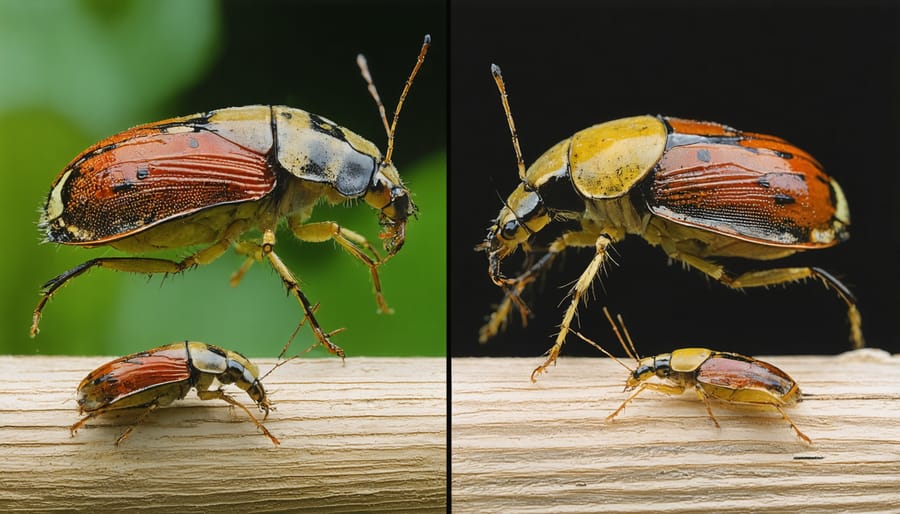
Mayfly and Stonefly Nymphs
If you’ve ever turned over a rock in a clear, flowing stream, you’ve likely encountered mayfly or stonefly nymphs – nature’s living water quality meters! These fascinating creatures are incredibly sensitive to pollution, making them excellent indicators of stream health. In fact, their presence alone often signals that the water is clean and well-oxygenated.
Mayfly nymphs are easily recognizable by their three tail filaments (though some have two) and the feathery gills along their abdomen that wave like tiny flags in the current. They come in various sizes and colors, from tiny pale yellow specimens to larger brown ones, each adapted to their specific habitat.
Stonefly nymphs, on the other hand, are typically darker and more robust, with two distinct tail filaments and no abdominal gills. You’ll often find them clinging to the undersides of rocks in fast-moving sections of streams. These tough little insects can survive in cooler waters and are a favorite food for trout.
Both species are crucial links in the aquatic food chain and are particularly beloved by fly fishers who create artificial lures mimicking these insects. Keep an eye out for their empty exoskeletons on streamside rocks – a sure sign that adults have emerged!
Family-Friendly Observation Tips
Essential Equipment
Getting started with aquatic insect observation doesn’t require expensive equipment. A few basic tools will help you explore this fascinating underwater world. First, you’ll need a sturdy net with fine mesh – a D-frame or kick net works best for scooping through vegetation and stirring up stream bottoms. A white plastic tray or pan is essential for examining your catches, as the light background makes it easier to spot tiny creatures.
Don’t forget to bring several clear containers or jars for closer observation of individual specimens. A magnifying glass or hand lens (at least 10x magnification) will reveal incredible details you might otherwise miss. A pair of waterproof boots or waders will keep you dry while exploring streams and pond edges.
For documentation, bring a small notebook and pencil to record your findings, and consider a waterproof camera or smartphone in a protective case. Pack some basic field guides for identification, and remember to bring clean water for rinsing your equipment. Eco-friendly tip: Always clean your gear between different water bodies to prevent spreading invasive species.
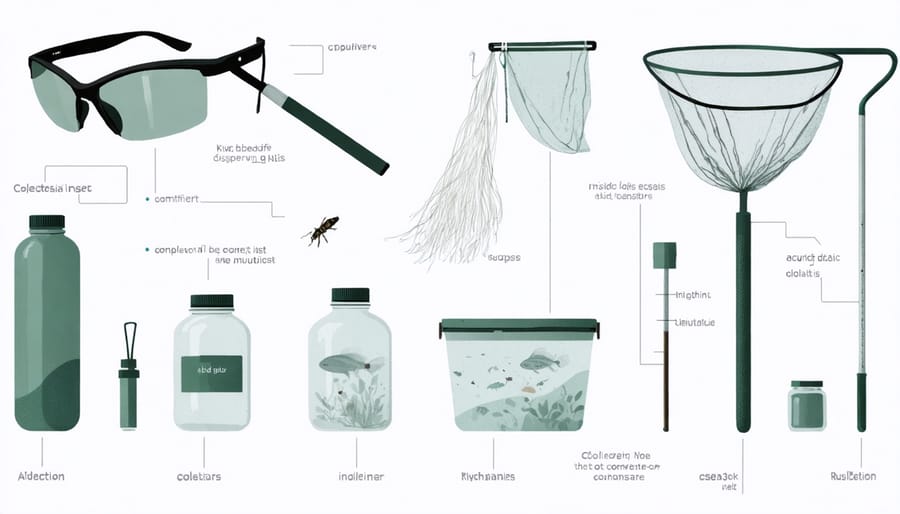
Observation Techniques
Observing aquatic insects in their natural habitat is an exciting way to learn about these fascinating creatures without disturbing their environment. One of the best techniques is to quietly approach the water’s edge and remain still for a few minutes, allowing the insects to resume their normal activities. Look for ripples on the surface, which often indicate water striders or whirligig beetles going about their business.
Bring along a pair of polarized sunglasses – they’ll help reduce glare on the water’s surface, making it easier to spot insects both above and below. A small magnifying glass can also enhance your viewing experience from a safe distance. Early morning or late afternoon tends to be the most active times for these creatures, offering the best observation opportunities.
For underwater viewing, try using a clear plastic container or a white sheet held just below the surface. This creates a viewing window without disturbing the habitat. Look for tell-tale signs like V-shaped ripples from swimming insects or small bubbles rising to the surface, which might indicate diving beetles or water boatmen.
Remember to stay quiet and avoid casting shadows over the water, as this can startle the insects. Taking photos with a zoom lens or making quick sketches in a nature journal are great ways to document your observations without interfering with these delicate ecosystems.
Conservation Guidelines
When observing aquatic insects, it’s essential to tread lightly and protect their delicate ecosystems. Always observe from the shoreline when possible, and if you need to wade into shallow water, do so carefully to avoid disturbing the riverbed. Just like amphibian habitats, these environments are sensitive to changes.
Use clear containers with water from the same source when collecting specimens for closer observation, and return them to exactly where you found them within 30 minutes. Never use soap or chemicals to clean your collection equipment – a thorough rinse with clean water is all you need.
Here’s a helpful tip I’ve learned over years of observing: take photos instead of specimens whenever possible. This way, you can study these fascinating creatures without disrupting their natural behaviors. Remember to pack out everything you bring in, including empty water bottles and snack wrappers.
If you’re introducing children to aquatic insect observation, teach them the “look but don’t take” approach. This helps foster a new generation of responsible nature enthusiasts while protecting these important indicators of water quality for years to come.
The fascinating world of aquatic insects opens up endless possibilities for discovery and connection with nature. From the darting water striders to the industrious caddisfly larvae, these remarkable creatures offer us a window into the health and vitality of our freshwater ecosystems. As you venture out to explore Ontario’s rivers, ponds, and wetlands, remember to tread lightly and observe respectfully.
Keep a field journal of your discoveries, take photos instead of specimens when possible, and always return rocks and debris to their original positions after investigating. These simple actions help preserve these delicate habitats for future generations of both insects and nature enthusiasts.
Share your knowledge with others, especially young explorers who might be discovering these underwater wonders for the first time. There’s nothing quite like seeing a child’s face light up when they spot their first diving beetle or witness a dragonfly nymph emerging from the water.
Whether you’re an educator, parent, or curious nature lover, the study of aquatic insects can become a lifelong passion that deepens your appreciation for our natural world. So grab your net, put on your water shoes, and head out to your nearest stream or pond – countless tiny adventures await!
Remember to check local guidelines before collecting, and consider joining a naturalist group to learn from experienced observers. Together, we can help protect these incredible creatures while enjoying the endless wonder they bring to our waterways.

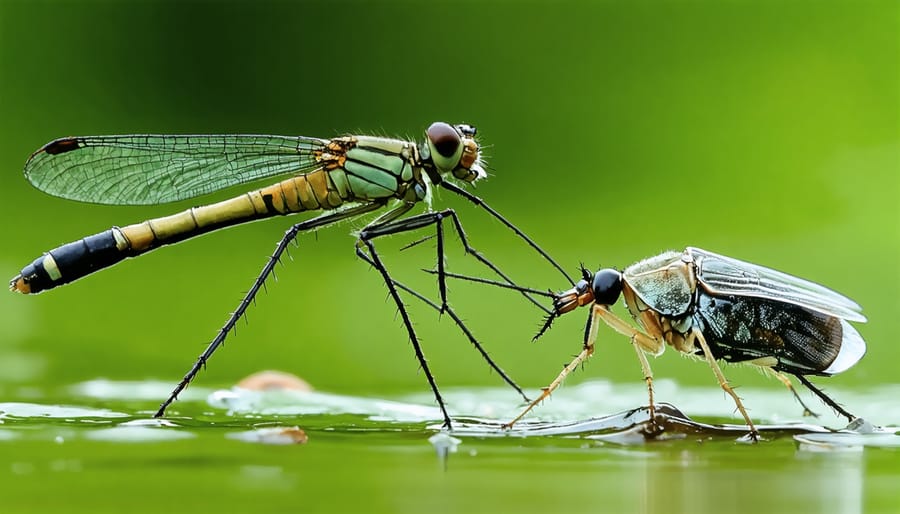









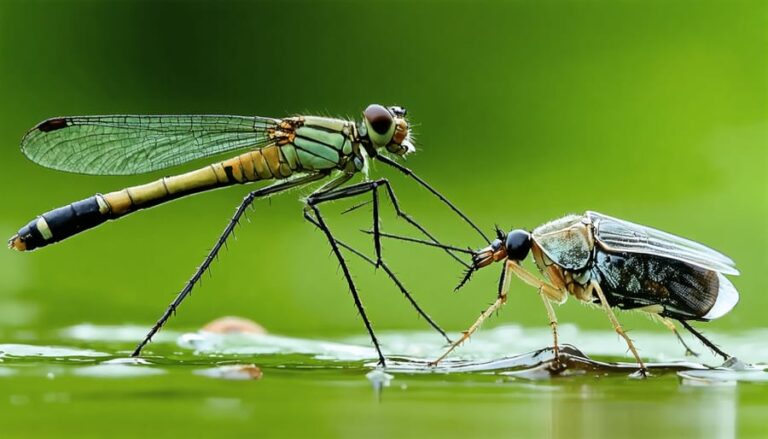


+ There are no comments
Add yours